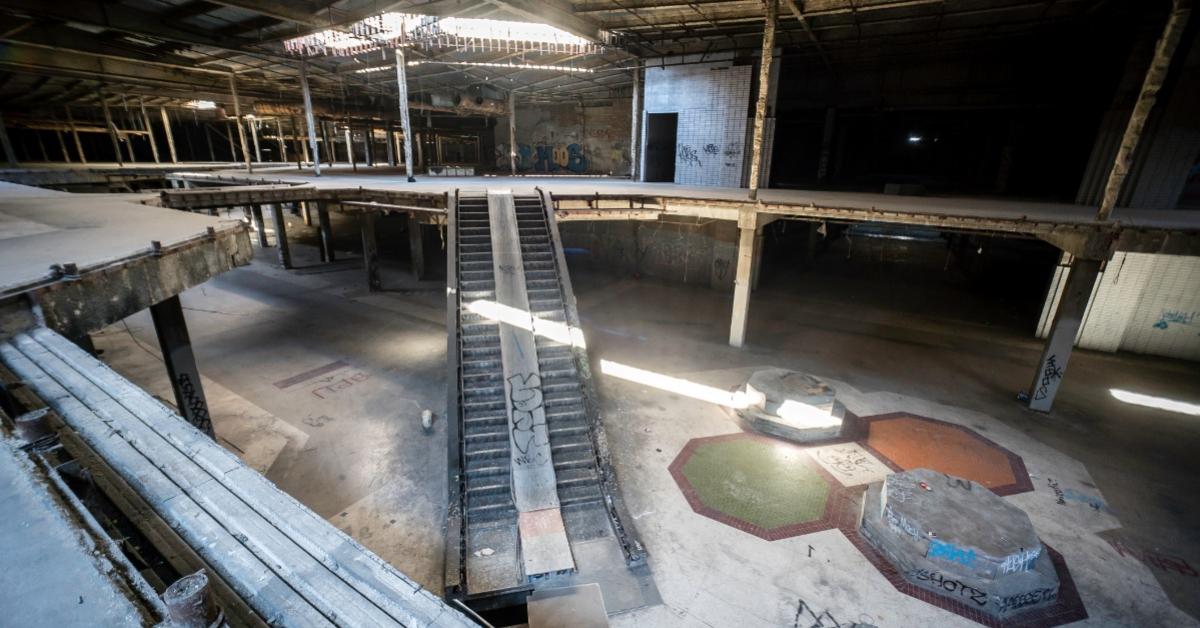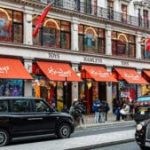
If you live in the United States, you are most likely familiar with empty storefronts, especially in malls. Once-great shopping centers are now suffering vacancies and a lack of patrons. To the readers of mises.org, it should not be surprising that the government is largely responsible. The state, through various interventions, has led to more vacant storefronts and financially struggling malls than there would be otherwise. Let me explain using a personal anecdote.
One of the malls close to me is the Galleria at Pittsburgh Mills, in Fraser Township, Pennsylvania. I used to stop at this mall with friends all the time. Recently, I revisited the mall while I happened to be in the area, and what greeted me was an endless procession of empty stores and a vacant food court. The sight was depressing, and I wondered what caused this languishing idleness. There are two things that might explain the unfortunate state of the Galleria: tax incentives and credit expansion.
The creation of the Galleria was welcomed with much fanfare due to its lavish promise of success. Possibilities as grand as a water park and even a nearby National Association for Stock Car Auto Racing (NASCAR) track were said to be right around the corner. Estimates of the mall’s future revenue excited local government officials, spurring a twenty-year tax agreement “defer[ring] a portion of property taxes to pay for the new $21 million Route 28 interchange leading to the mall as well as needed infrastructure like water and sewer lines.”
A portion of the tax revenue produced by the mall would thus be kept in-house, producing infrastructure vital to the mall’s prosperity. Initially, this sounds good; exclusive tax breaks can be holes through which the free market breathes, but keep in mind that they are grants of special privilege. Whether the Galleria agreement was just or unjust is another matter. Countless other businesses and malls are not given the same luxury of deciding how the government spends their tax money; therefore, there must be some market distortion occurring.
Unfortunately, the promises of the mall never materialized, despite the exuberance of the government officials who invested in it. Now, the township is being punished; tax revenue that was “owed” to them never came.
Tax incentives encouraged the mall, but overconfidence fueled its creation. What caused this overconfidence? The second cause of the mall’s current state, credit expansion, is likely the culprit.
The mall was built and opened during the real estate boom that culminated in the crash of 2008, and it received a $133 million loan in 2006, near the apotheosis of the bubble. It was planned with the expectation that the market would continue to boom; the developers likely believed they could get a loan if they needed one, and so they did.
The loan itself is of a questionable character. The mall was an ambitiously large project; in fact, it is the third-largest mall in the state of Pennsylvania and, to make matters worse, only has one floor. The amount of walking to traverse the mall is absurd. It is a nice place to go to stretch one’s legs but not a good place to shop. Such a project would be laughable if undertaken today, but during the real estate bubble, it seemed perfectly rational.
Adding to the mall’s woes, it is only twenty minutes away from Pittsburgh, which has plenty of shopping centers, and thirty minutes away from Ross Park Mall, which has been a much more successful venture. Why such a large and overbearing complex was built close to better shopping centers is beyond me.
We cannot entirely know the motivations behind the mall, but in a free market, loaning money to this endeavor would more than likely have been a no go; however, during the irrational exuberance of the real estate bubble that came crashing down in 2008, it seemed like a good deal.
Credit expansion and the aforementioned tax incentives deemed the unnecessary and inefficient mall necessary and efficient, and a history of closures and empty storefronts began. This all culminated in 2021, when the mall, unable to pay back its loan, was sold at auction for a whopping one hundred dollars. Wells Fargo Bank, who made the 2006 loan, bought the mall with the hope of turning it around; however, as my recent visits indicate, this effort was more than likely a failure.
Today, the mall’s value stands at $11 million, whereas its original value in 2006 was $190 million, a drop of nearly 200 percent. The former owner of the mall cited the recession of 2008 as the cause of the property’s issues, but as we know, 2008 was not the problem, but the cure.
The recession purged errors from the system, correcting market overvaluations. The mall itself was a massive error; 2008 merely exposed the mistake for what it was.
Malls are clearly facing a war on multiple fronts; online shopping is one of the American mall’s biggest competitors. However, the distortions that governments caused through tax incentives and credit expansion led to malinvestment in malls, therefore creating more struggling malls than there would be otherwise. The Galleria is not the only mall in the country financed during the real estate bubble (the Lazarus / Urban Redevelopment Authority saga and the Mall of the Bluffs are similar cases).
Ultimately, the malls were going to die; that’s the nature of a competitive system, but governments with their myriad interventions caused the past to clash with the future, and now we are left with more empty storefronts than would exist without government intervention.
A saddening picture, but one that is all too familiar. The only way that this mistake will not be made in the future is if the government ceases its interventions.






